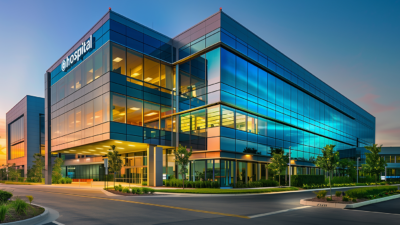The Colliers National Healthcare Conference (NHC) took place in Washington D.C. in October and served to provide invaluable insights into the evolving landscape of healthcare real estate. With experts from various fields sharing their perspectives, such as investors and providers as well as medical office analytics from Revista, the conference highlighted emerging trends and innovations in healthcare real estate. Panelists and speakers explored prudent topics such as the impact of artificial intelligence, shrinking hospital margins and new areas of opportunity.
Stark Law and ASC Expansion
Hall Render’s Andrew Dick, who specializes in healthcare law, emphasized the significance of Stark Law in healthcare real estate during the Healthcare Fellows Pre-Conference session.
Compliance with this anti-kickback statute is crucial for professionals in the industry. Providing strong leadership and thought leadership on Stark Law is essential for ensuring legal compliance for clients. He also highlighted the growing importance of Ambulatory Surgery Centers (ASCs) and outpatient care in the future profitability of health systems and allows hospitals to allocate resources away from expensive acute care inpatient facilities.
This shift in healthcare delivery towards ASCs is a key trend that was explored during the conference as procedures in cardiology, multi-specialty areas like OBGYN, orthopedics, gastroenterology, and eye care, including retina attachment, are becoming increasingly common in outpatient settings and is indicative of a broader transformation in how healthcare services are provided.
The New MOB: Medical Outpatient Buildings
Moving away from its former moniker, “medical outpatient building,” is gaining traction to distinguish it from traditional office buildings. A recurring theme throughout the conference highlighted the challenges faced by traditional offices, such as high vacancy rates and unoccupied leased spaces.
During the Provider Panel, health system leaders shared that most are reducing their administrative office footprint. As healthcare providers face challenges due to low profit margins and rising labor costs, the panel emphasized the necessity of reducing office space, an approach that has been adopted by various organizations, leading also to a reduction in new construction costs.
Unlike offices, medical outpatient buildings are seeing occupancy climbing across the top 50 metro areas per Revista Med’s Mike Hargrave, and demand is growing faster than supply with year-over-year rent growth especially impressive across the Sunbelt states. With rates expected to stay higher longer, MOB prices are lowering. Despite values declining, distress among this property type is not on the rise, unlike many other CRE asset classes.
Finding Creative Lending Solutions
Given the current lending landscape, obtaining a loan for healthcare real estate projects has become challenging. A Credit Tenant Lease (CTL) presents a creative solution by leveraging the high credit of hospitals for long-term leases. This approach minimizes risks associated with loans and provides an opportunity for a closer-to-ownership experience without the actual ownership responsibilities.
Panelists during the investor panel noted that “lenders are being more diligent and prudent before making decisions in the current high interest-rate, inflationary environment,” reported Healthcare Real Estate Insights.
Growth Areas in Healthcare Real Estate
Proton oncology care and children’s hospitals are identified as growing fields in healthcare real estate. Proton Oncology care is driven by advancements in cancer treatment driving demand for space, while children’s hospitals are essential due to the unique healthcare needs of pediatric patients. In general, children require 10 times more care from their healthcare team than an adult.
Behavioral health was also recognized as a growth area in healthcare real estate, with a focus on repurposing senior housing projects to meet the increasing demand for inpatient facilities.
Supportive Housing Initiatives on the Rise
The conference highlighted the growing trend of hospitals getting involved in supportive housing initiatives. Affordable housing and healthcare are closely linked, and providing housing options for low-income patients can significantly impact their recovery and reduce high costs associated with emergency care.
The Colliers National Healthcare Conference provided valuable insights into the evolving landscape of healthcare real estate. From legal compliance to emerging trends and growth areas, the conference covered various topics on the minds of healthcare leaders and shaping the future of the sector. Adapting to these trends and leveraging creative solutions will be essential for success in the dynamic healthcare real estate market.

 Julie Johnson
Julie Johnson

 Shawn Janus
Shawn Janus
